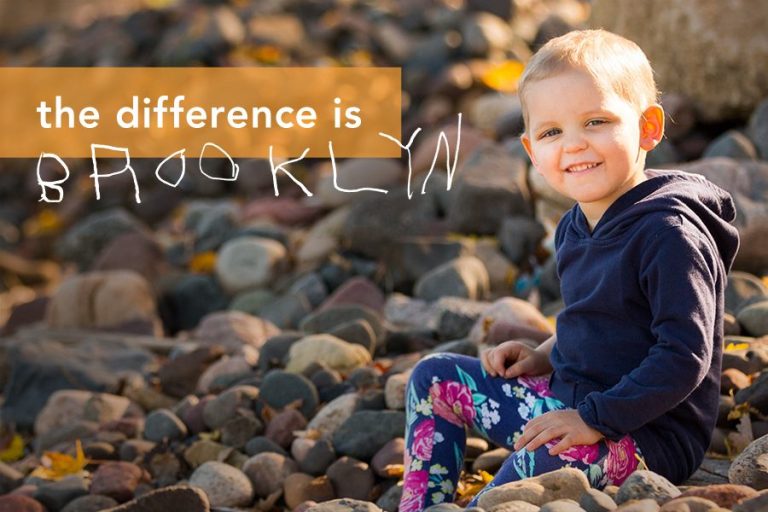Lucie Turcotte, MD, MPH, MS loves hearing about school, dating, graduations, weddings… everything “normal” in a childhood cancer survivor’s life. As a survivorship doctor and researcher at the University of Minnesota, she meets children and families at their absolute low points – sometimes when they are in the throes of potentially facing death. “Seeing them celebrate the milestones they feared would not come is almost indescribable,” Turcotte said.
She also sees that re-growing hair and rising energy after the completion of treatment creates many misconceptions about survivors. Just because cancer treatment is over doesn’t mean that a patient isn’t still dealing with the aftermath.
“People do not understand the physical, mental and emotional struggles many survivors might be dealing with,” Lucie said. These struggles, called late effects, compose a long list ranging from heart disease to infertility to secondary cancers and extreme anxiety. Many, if left unchecked, can become fatal.
“The reality is that two-thirds of childhood cancer survivors will develop long-term complications from their prior treatments,” said Karim Thomas Sadak, MD, MPH, MSE, and director of the University of Minnesota’s Childhood Cancer Survivor Program (CCSP), which is supported by Children’s Cancer Research Fund.
The CCSP provides specialized health care and education to cancer survivors including late-effects screening and health care plans for the future. The program is typically introduced to patients before they transfer from the oncology team to the survivorship team.
But, a meager 20 percent of survivors in the United States receive the survivor-focused care they need, and the CCSP aims to increase that number.
“It breaks our hearts to meet a survivor who now has life-threatening health conditions directly related to their prior treatments, and we could have helped catch them before they became serious, or even better, prevented them altogether, ” said Sadak. He sees that many adolescents and young adults lack the self-efficacy and self-management skills necessary to keep up with their health care. Everything from navigating insurance to scheduling appointments can become daunting roadblocks for survivors.
The gap is also affected by holes in essential information regarding the patient’s diagnosis, treatment and health. In fact, research shows many long-term survivors cannot fully or accurately describe their previous cancer treatments or long-term health risks.
“When we lose a patient to follow-up in the CCSP,” said Sadak, “we lose an opportunity to make their life healthier and better in so many ways. The right education may help prevent the scenario where survivors stop seeing the specialists that they so desperately may need.”
For him, the ideal survivorship scenario looks like this: open communication between everyone involved including survivors, oncologists, nurses, etc. Everyone is well-informed and everyone is trusting. Sadak and Turcotte agree that a team approach is imperative for all concerned parties to be aware of risks and how to lower them.
Turcotte believes more overlap between a patient’s primary oncology team and their survivorship team early on could create a feeling of continuity for survivors, and it could help the teams fill gaps in diagnosis and treatment information.
Turcotte also speculates that the preparation beforehand and a face-to-face annual one-hour visit with a survivor might not be enough to get a full picture of a survivor’s case.
So, the survivorship team is developing alternative strategies to help survivors understand their health and develop plans that empower survivors to care for themselves and stay healthy in the long-term.
This includes developing a mobile health app-based intervention that will help providers stay connected with childhood cancer survivors (via text messages and updated contact information), and deliver education through interactive, fun approaches specifically geared to adolescents and young adults.
Additionally, with help from CCRF, Sadak and Turcotte are working on several other projects to improve survivorship care including studying the connection between childhood cancer and secondary breast cancer, and developing outdoor physical activity interventions to improve the health and quality of life for survivors.
“CCRF donors provide the funding that allows us to create ways to never let a survivor slip through the cracks or get lost in the health care system,” said Sadak. “Together, we can make sure that children with cancer live their lives to the fullest and don't just survive, they thrive.”
Support Groundbreaking Research
Your support propels bold ideas forward and empowers researchers to discover better, safer treatments for children who are fighting cancer.




